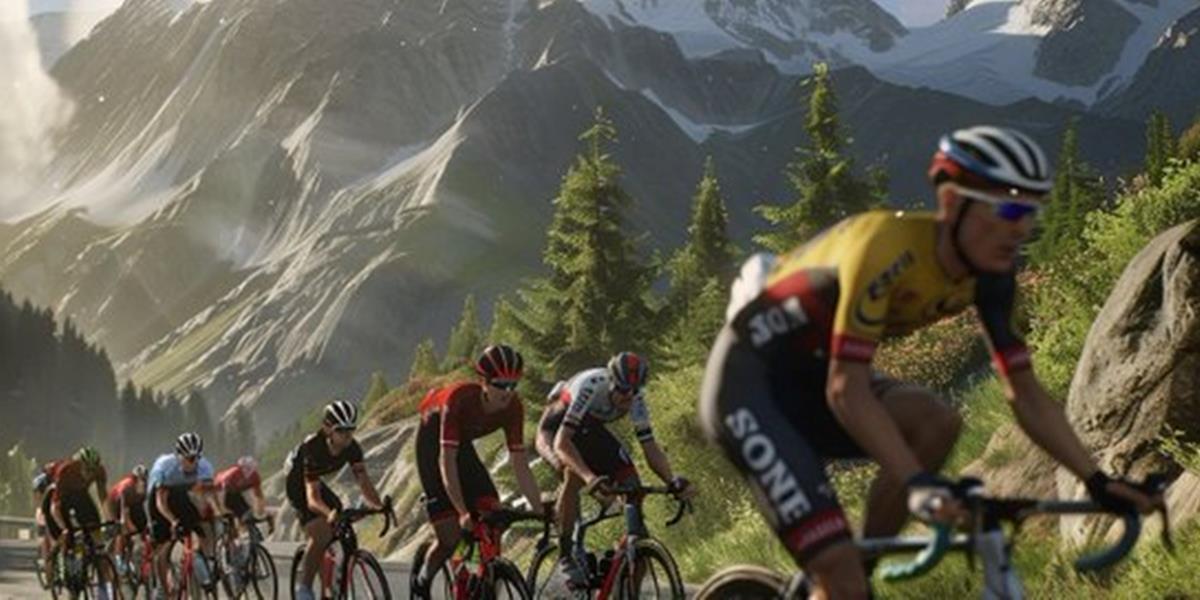The Spectacle of the Tour
Every summer, the Tour de France captivates millions around the globe. It’s not just a race but a grand spectacle that draws attention from cycling enthusiasts, casual fans, and sponsors alike.This widespread attention is the first critical factor in the Tour's ability to generate revenue.
The Players and Their Roles
Several key players contribute to the financial success of the Tour de France. Each has a unique role in the revenue model:- Organizers (ASO - Amaury Sport Organisation):
Broadcast Rights: The ASO sells broadcasting rights to TV networks worldwide. This is a significant revenue stream, as networks are willing to pay top dollar to air the race live and attract large audiences.
Sponsorships: The ASO secures sponsorship deals with major brands. These sponsors want their logos seen by millions, and they pay handsomely for the privilege. From the yellow jersey sponsor to individual team sponsors, the visibility is immense.
Merchandise and Licensing: Selling official Tour de France merchandise like jerseys, caps, and souvenirs also adds to the revenue. - Teams:
Sponsorships: Cycling teams are sponsored by companies seeking exposure. These sponsors fund the teams in exchange for branding on the cyclists' gear, vehicles, and even team names.
Prize Money: While not the largest income source, winning stages and the overall race brings in prize money, which can be significant, especially for top teams and riders. - Host Cities:
Hosting Fees: Cities bid and pay to host the start or finish of stages. This investment is seen as worthwhile due to the influx of tourists and global exposure.
Local Revenue: Local businesses benefit from the surge of visitors, including hotels, restaurants, and shops. - Sponsors:
Brand Exposure: Sponsors like Skoda, LCL, and Leclerc invest in the Tour to boost brand recognition. They benefit from the association with a prestigious, widely-viewed event.
Activation Campaigns: These companies run promotional campaigns around the Tour, enhancing customer engagement and driving sales. - Media:
Advertising Revenue: TV networks, radio stations, and online platforms that cover the Tour make money through advertising. The more viewers they attract, the more they can charge for ad slots.
Why the Tour de France is Irresistible
The combination of tradition, competition, and global reach makes the Tour de France an attractive proposition for all these stakeholders.For fans, it's a thrilling spectacle. For cities and sponsors, it's a golden opportunity for exposure.
For media companies, it's a guaranteed audience. This broad appeal ensures that every participant finds value in being part of the Tour.
The Financial Cycle
To sustain this cycle of revenue generation, continuous investment in the event’s quality and reach is essential. Here’s how the financial cycle perpetuates:- Reinvestment: Organizers reinvest in the race’s infrastructure, improving routes, safety measures, and overall experience for participants and fans.
- Marketing: Aggressive marketing campaigns keep the Tour de France in the global spotlight, attracting new fans and sponsors each year.
- Innovation: Embracing technology, from enhanced broadcasting techniques to social media engagement, keeps the event relevant and accessible to a broader audience.
How Startups Can Learn from the Tour de France's Revenue Model
Startups can learn valuable insights from its success. Here's how:Build a Strong Brand Presence
The Tour de France commands attention through its historical prestige and wide-reaching appeal. Startups should focus on building a strong, recognizable brand that stands out. This involves:- Storytelling: Create a compelling narrative around your brand. The Tour de France has a rich history that captivates audiences. Similarly, your startup should have a story that resonates with people and sets you apart from competitors.
- Consistency: Be consistent in your branding efforts. From your logo to your messaging, ensure everything aligns with your brand identity.
Identify and Engage Key Stakeholders
The success of the Tour de France is due to the effective involvement of multiple stakeholders. Startups need to identify their key stakeholders and engage them effectively:- Customers: Understand your target market and tailor your offerings to meet their needs. Engage with them through feedback and adapt based on their input.
- Investors: Attract investors by demonstrating the potential for growth and a clear return on investment. Showcase your business plan, market analysis, and growth strategy.
- Partners: Collaborate with other businesses or influencers who can help amplify your reach. These partnerships can provide mutual benefits and open new avenues for growth.
Create Value and Demand
The Tour de France creates immense value for everyone involved, making it highly desirable. Startups can create similar value by focusing on:- Quality Products/Services: Ensure your offerings are of high quality and meet the needs of your customers. Satisfied customers will become repeat buyers and advocates for your brand.
- Innovative Solutions: Continuously innovate to stay ahead of the competition. The Tour de France evolves each year, adding new elements to keep it exciting. Similarly, your startup should constantly seek ways to improve and innovate.
Develop a Sustainable Revenue Model
The financial sustainability of the Tour de France is a key to its longevity. Startups should focus on developing a robust revenue model by:- Diverse Revenue Streams: Don't rely on a single source of income. Just as the Tour de France earns money through broadcasting rights, sponsorships, merchandise, and more, your startup should explore multiple revenue streams.
- Reinvestment: Allocate a portion of your profits to reinvest in the business. This could be in the form of R&D, marketing, or improving your product/service offerings. Reinvestment ensures continuous growth and improvement.
- Marketing and Promotion: Invest in marketing to keep your brand in the spotlight. Use a mix of traditional and digital marketing strategies to reach a broader audience.
Practical Steps for Startups
- Build a Solid Brand: Invest in branding from day one. Your brand is more than just a logo; it’s the perception people have of your business.
- Engage Your Audience: Use social media, blogs, and other content marketing strategies to engage with your audience. Regular updates and interactive content keep people interested.
- Leverage Partnerships: Look for strategic partnerships that can help you grow. These could be with other startups, established companies, or even influencers.
- Monitor and Adapt: Keep an eye on market trends and be ready to adapt your strategy. The Tour de France adapts its routes and marketing strategies based on audience feedback and market trends.
- Focus on Quality: Never compromise on the quality of your product or service. High quality leads to customer satisfaction, which in turn drives loyalty and word-of-mouth marketing.

SaaStr says AI replaced sales. The real reason is buried in the numbers, the business model, and a growth story that isn’t what it used to be.

SpaceX is quietly pushing 4,400 Starlink satellites closer to Earth.** It sounds safer — but going lower means faster failures, billion-dollar replacement costs, and a hard limit set by physics. How far can they really go before orbit fights back?

A $2.9 billion Tesla battery deal shrank to just $7,000 in days. Here’s how the 4680 hype, Cybertruck reality, and market mood swings wiped out 99% of its value.

Explore how BYD is challenging Tesla in the global EV market with record sales, stronger margins, and rapid expansion. A data-driven comparison of the world’s top electric vehicle companies in 2025.

Hermès just overtook LVMH as the world’s most valuable luxury brand—by doing less.
The economics behind it will change how you think about brand strategy.

They didn’t storm the gates — they bought them.
How Goldman Sachs and J.P. Morgan helped China quietly acquire billion-dollar Western companies — and why Trump’s new tariffs could shut the door for good.

